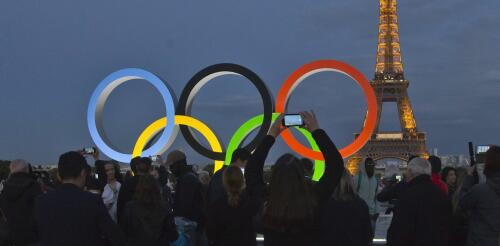Extreme heat
High school sports teams start practices soon in what has been an extremely hot summer in much of the country. Now, before they hit the field, is the time for athletes to start slowly and safely building up strength and stamina. Studies have found that the greatest risk of heat illness occurs in the first two weeks of team practices, while players’ bodies are still getting used to the physical exertion and the heat. Being physically ready to start increasingly intense team practices can help reduce the risk. I am an athletic trainer who specializes in catastrophic injuries and heat illnesses. Here’s what everyone needs to know to help keep athletes safe in the heat. Why should athletes restart workouts slowly? One of the biggest risk factors for developing dangerous exertional heat illnesses is your physical fitness level. That’s because how fit you are affects your heart rate and breathing, and also your ability to regulate your body temperature. If an athl...
Europe is in the midst of a heat wave, and while Olympic athletes in Paris for the 2024 Summer Games might be spared the worst of it, the weather will still be hot. As global temperatures have risen, major sporting events like the Olympics and FIFA World Cup have had to adapt to high heat and extreme storms to keep athletes and fans safe and allow the games to go on. Olympic organizers have moved events such as marathons to early mornings and even to cooler cities. FIFA, the governing body for world soccer, pushed the 2022 Men’s World Cup back from its usual time in June to late November so it could be held in Qatar. Many of the Olympic events, such as beach volleyball, will be played outside in the heat. AP Photo/Thomas Padilla The heat risks and the environmental impact of major sporting events have led some people to question whether these events should be held at all. But as someone who st...
A month into summer 2024, the vast majority of the U.S. population had already experienced at least one extreme heat wave, and millions of people were under heat alerts, with forecasts warning of more ahead. Death Valley hit 125 degrees Fahrenheit (51.7 Celsius) or higher for nine consecutive days in early July. Las Vegas broke its all-time heat record at 120 F (48.9 C). Days of 100-degree heat dried out the California landscapes, fueling wildfires there and in the Northwest. Oregon reported several suspected heat deaths. Globally, the planet had its hottest day in at least eight decades of recordkeeping on July 21 – and then broke the record again on July 22, according to the European Union’s Copernicus Climate Change Service. The extreme heat is part of a longer trend: Each of the past 13 months has been the hottest on record for that month globally, including the hottest June, the EU service reported in early July. It also found that the average temperature for t...
As intense heat breaks records around the world, a little-reported fact offers some hope for cooling down cities: Under even the most intense periods of extreme heat, some city blocks never experience heat wave temperatures. How is this possible? Civilizations have recognized the power of cities to heat themselves up and cool themselves for centuries. City architects in ancient Rome called for narrowing streets to lessen late afternoon temperatures. Narrow streets were found to cool the air by limiting the area exposed to direct sunlight. The whitewashed architecture of the Greek Isles demonstrates another long-practiced strategy. Light-colored walls and roofs can help cool cities by reflecting incoming sunlight. Whitewashed buildings on the Greek island of Folegandros help deflect the heat rather than absorbing it. Etienne O. Dallaire via Wikimedia, CC BY In hot and humid regions of the southern...
Modern buildings tend to take electricity and air conditioning for granted. They often have glass facades and windows that can’t be opened. And when the power goes out for days in the middle of a heat wave, as the Houston area experienced in July 2024 after Hurricane Beryl, these buildings can become unbearable. Yet, for millennia, civilizations knew how to shelter humans in hot and dry climates. As an architectural designer and researcher studying urban resilience, I have examined many of the techniques and the lessons these ancient civilizations can offer for living in hotter and drier conditions. With global temperatures rising, studies show that dangerously hot summers like those in 2023 and 2024 will become increasingly common, and intense storms might result in more power outages. To prepare for an even hotter future, designers today could learn from the past. Sumerians: Keeping cool together The Sumerians lived about 6,000 years ago in a hot and dry climate that...




